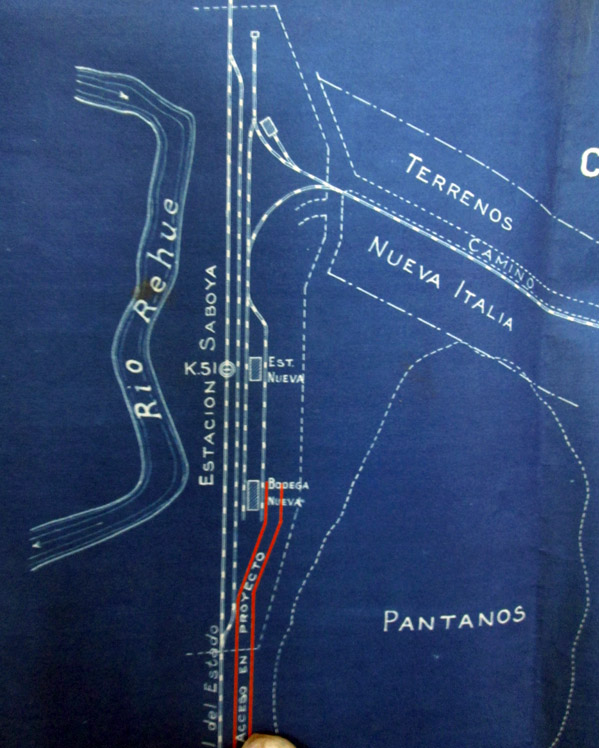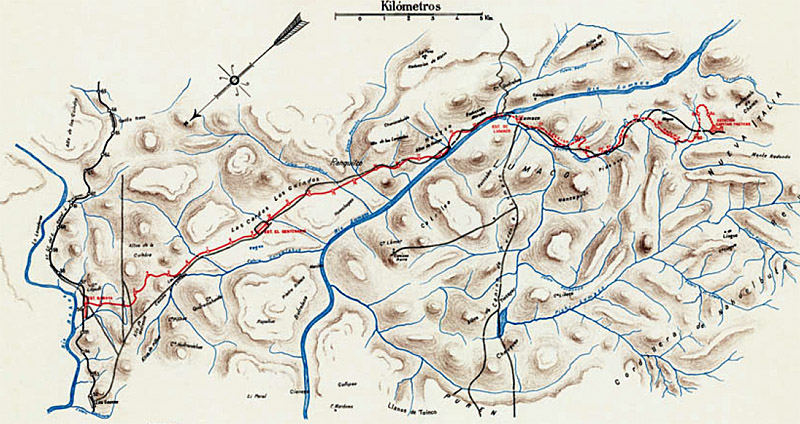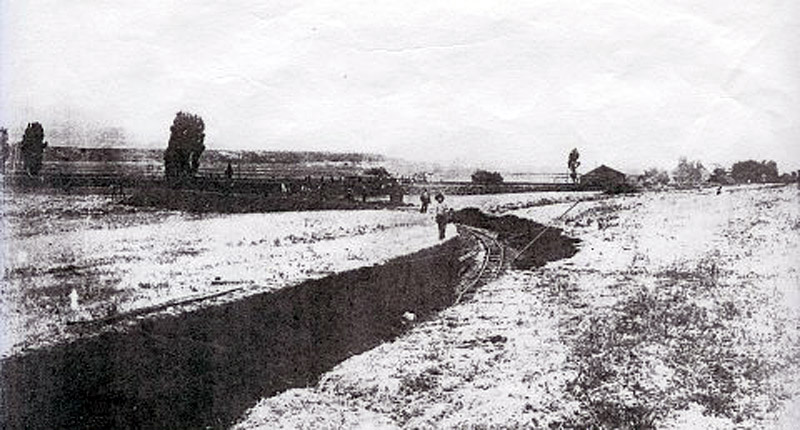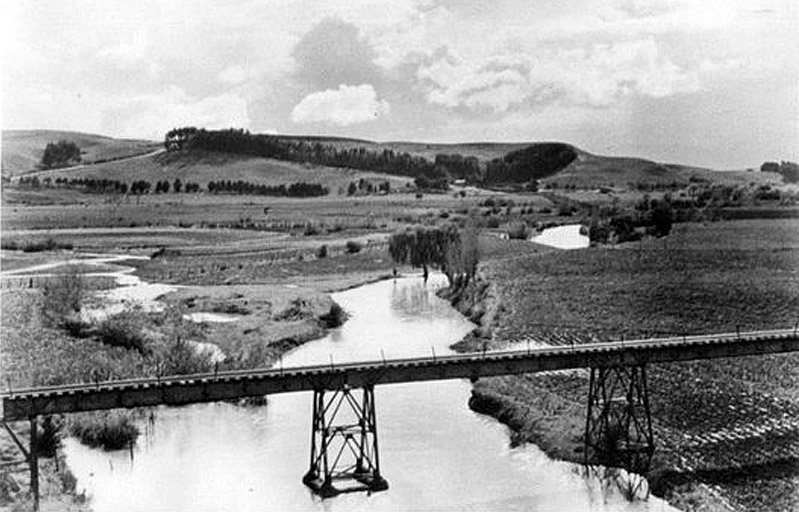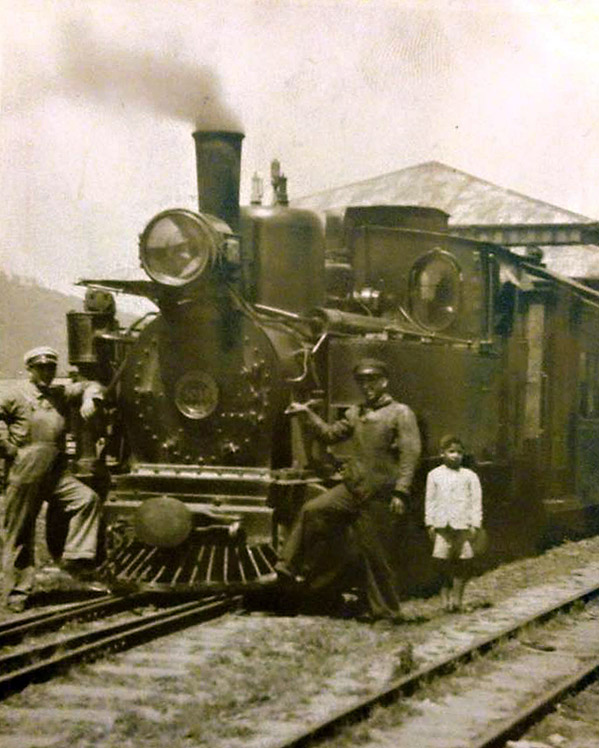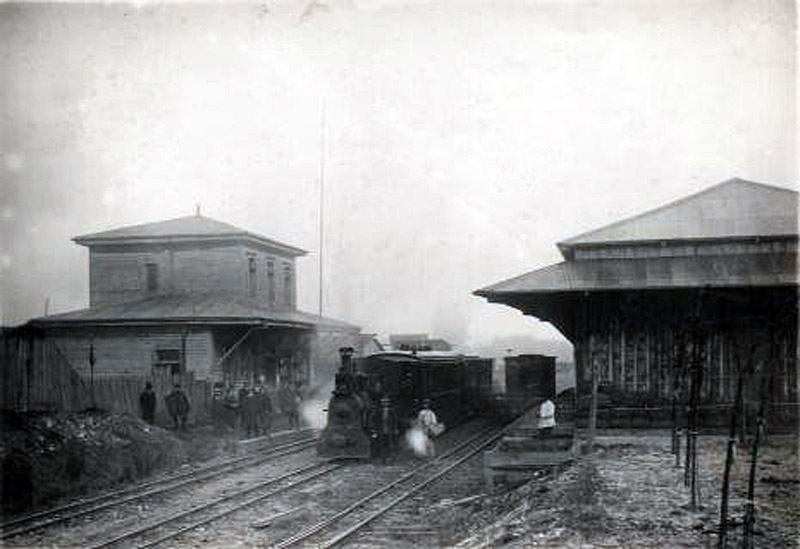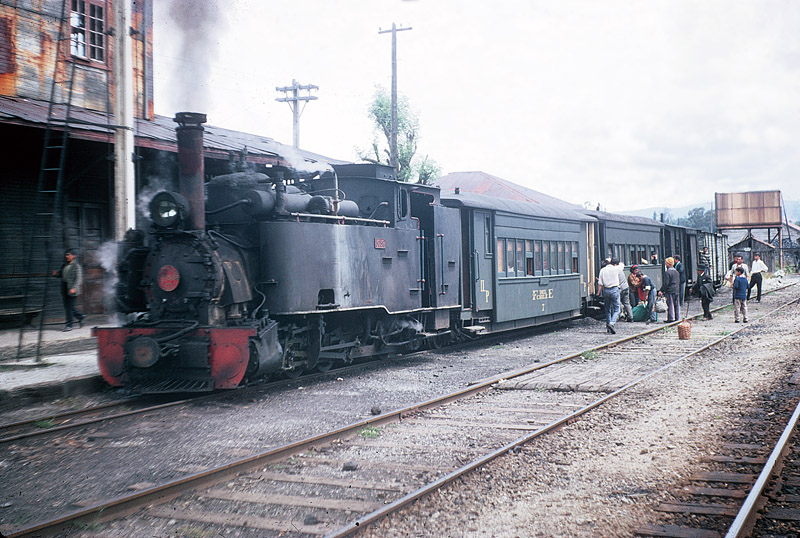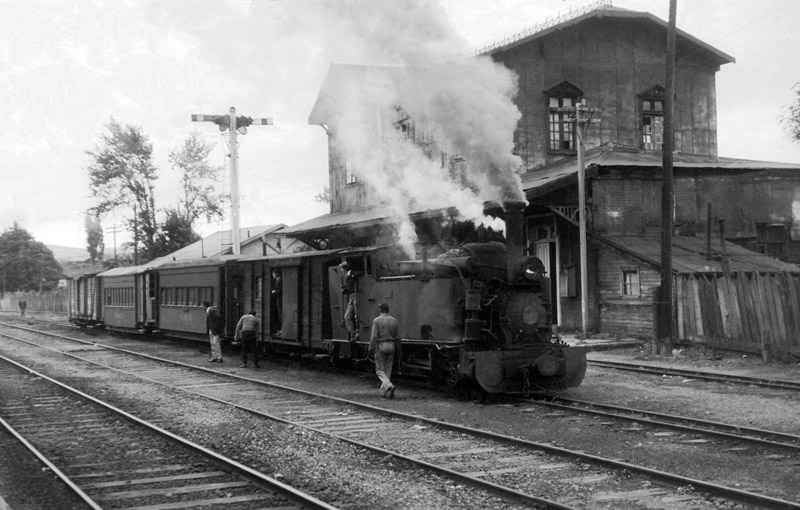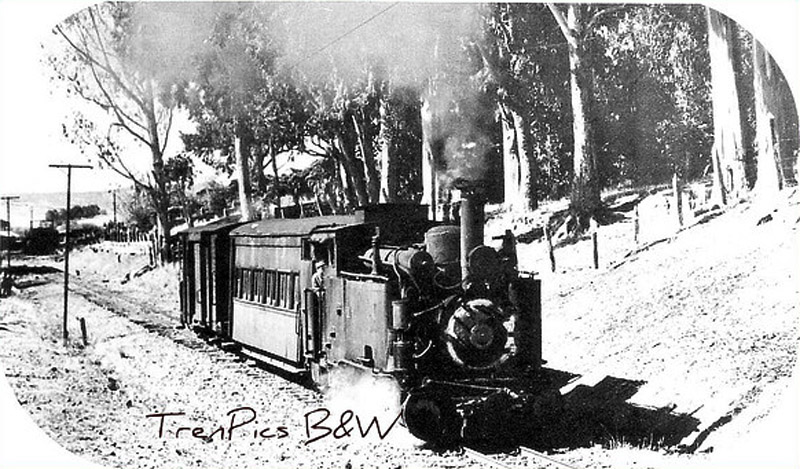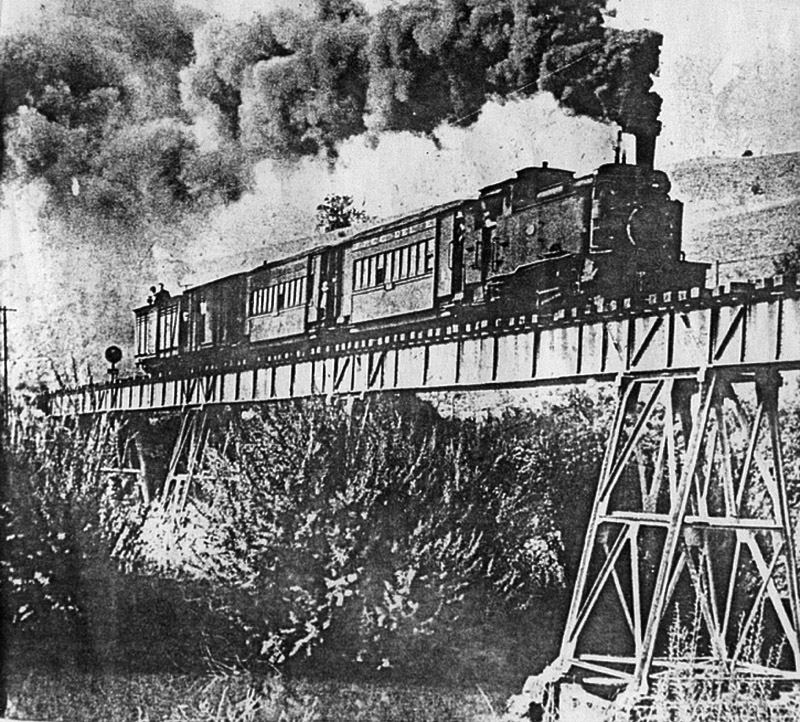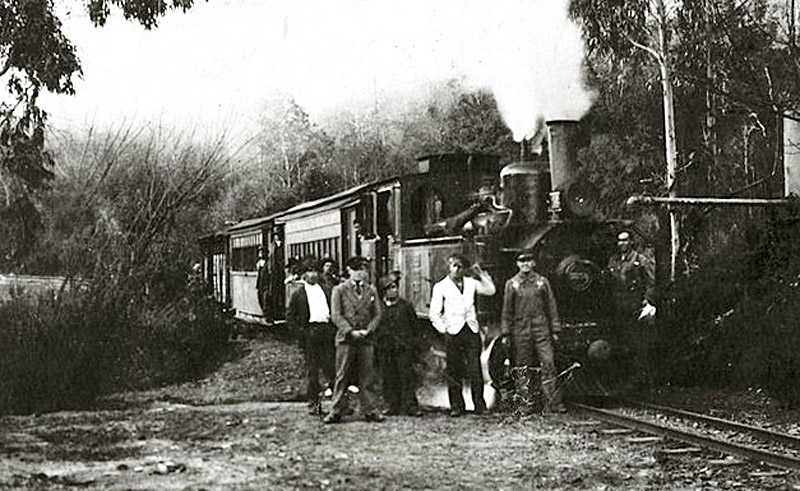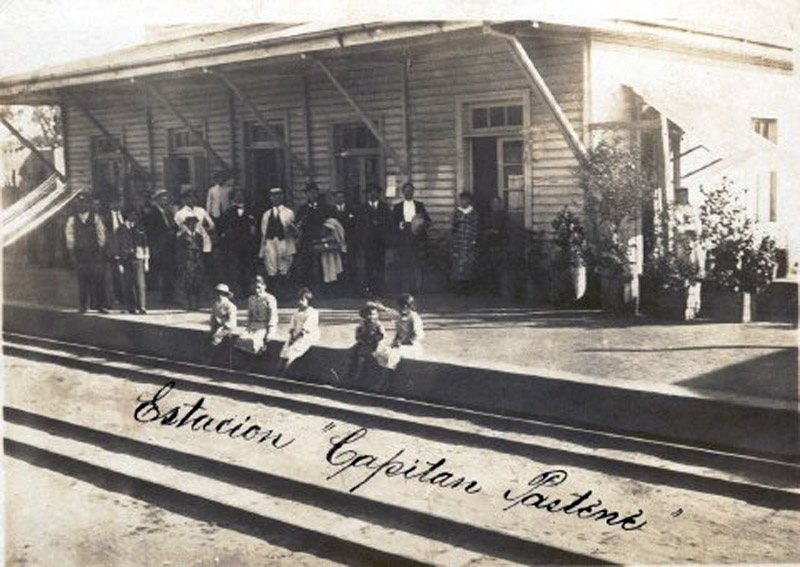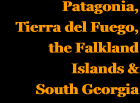 |
 |
 |
|||||||||||||||||
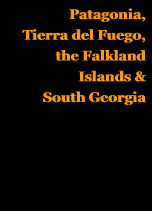 |
|||||||||||||||||||
 |
|||||||||||||||||||
The other EFE 60cm gauge branches: 1 Saboya to Lumaco and Capitán Pastene The small town of Capitán Pastene, which even today only has a population of around 2600, lies in the forested hills north-west of Temuco, in the present-day Región IX de la Araucanía. It is famous in Chile for being a largely Italian community, formed by immigrants from Pavullo in Emilia Romagna. It was the immigrant community which initiated the construction of a railway, under the leadership of the Sociedad Agrícola e Industrial Nueva Italia, around 1906. They hoped to build a metre gauge line from the settlement of Los Sauces, on the broad gauge EFE route south from Renaico through Angol to Traiguén. It is worth noting that even then Traiguén would probably have been the preferred junction point, being larger and closer to Capitán Pastene than Los Sauces, but deep valleys such as that of the Río Rehue made that impossible. The scheme got as far as purchasing a small locomotive and ten wagons and starting work in February 1908, before being taken over by the state and altered to become one of the several 60cm gauge branches being constructed from 1909 onward [MOBR2775]. During this process, the plans were changed to create a new junction station at Saboya, some five kilometres south of Los Sauces. This may have reduced the construction costs but it made the narrow gauge line totally dependent on connection with main-line broad gauge trains. The route This plan, found in file MOBR2776 at ArNAd, shows the broad gauge from Traiguén running northward (down the map) towards Los Sauces and Angol. The narrow gauge takes off west from one side of a triangle. The track layout does not show that the loco shed contained two roads and eventually had a turntable and therefore may not be complete in other respects either.
The route takes off southwestward over the very minor ridge which at this point separates the valleys of the Río Rehue and the Río Lumaco. Once across the ridge the line turns south and eventually drops to near flood plain level, taking a largely straight course south along the eastern edge of the plain to Lumaco 22 km away. During the course of this journey there was a station provided at Centenario, and various indigenous settlements are passed around Ranquilco where there may also have been a halt. The map below shows the broad gauge in black on the left, parallel to the Río Rehue The small town of Los Sauces is at the very bottom left. The narrow gauge is shown in red, heading south to Lumaco and then into the hills and up to Capitán Pastene. A larger version, complete with title and gradient profile, is available on an appendix page.
At Lumaco the station was built on the near side of the river, though the small town was on the opposite bank, and this situation seems to have persisted even after a bridge and the second and much more difficult stage of construction – up the narrow forested valley to Capitán Pastene – had been completed. This second stage begins with two kilometres along the flood plain, now of the tributary stream known as the ??? However, the climb then starts in earnest. The route sticks to the eastern side of the gradually narrowing valley. It steadily climbs higher, via a couple of diversions into re-entrant valleys to maintain the gradient, until in the latter stages it is high on a rock ledge above the parallel road. There is a 53m tunnel at one point through a spur. Finally, there is another and much larger loop east into a re-entrant before the route terminates at the foot of the town of Capitán Pastene, which slopes steeply uphill to the east. Construction Construction of the second section began under decree 1559 of 17th August 1913, with Señores Soto y Moran as the contractors. Excavation work in progress, possibly on the very first curve out of Saboya station, in which case the broad gauge will be running along the low embankment in the background.
The only substantial bridge was that over the Río Lumaco between the station of that name and its village. This was a six span steel structure on steel trestle piers and concrete abutments.
Construction to Lumaco was completed in the first quarter of 1914, and the line was handed over to the EFE in June of that year. Building of the second section up yo Capitán Pastene began in November 1913 but was delayed by heavy rainfall and subsequently the route was altered to minimise the risk from such events. The work was completed in January 1918. Locomotives and stock During the construction period up to seven narrow gauge engines were based at Saboya. These included: It is also worth noting that the contractor hired a broad gauge loco in order to shunt at Saboya during the construction work. In 1910 this was a tipo 15 4-4-0 built by Baldwin in 1874: no. 70 ‘LINARES’ BLW w/n 3520 ex FCS no. 23, ex FCCCiT no. 18. In 1911 this was replaced by tipo 31 4-4-0 no. 124 ‘PANGUILEMO’ which had been built at the EFE's Santiago workshops in 1888. Also 'VALDIVIA’, a tipo 15 4-4-0 originally built for the North & South American Construction Company, undertook this task for a while. In later years locos were swopped between the various EFE branches in the usual way. Normally we would only have evidence of their use at specific locations from photographs. However, in 1957 a civil engineering student at the Universidad de Chile, Señor Luis Katonar Z., studied the branch for his thesis. He lists the locos based at Saboya in late 1954 as tipo a 5025 and 5038, tipo b 5041, 5044, 5045, 5056; and tipo b-1 (Hunslet 4-6-0T) 5062. Of these 5025, 5041 and 5056 were reported as being in poor condition whilst the remainder were all satisfactory. D Trevor Rowe, one of the earliest explorers with a camera looking for obscure railways, visited this line in 1968. His photos show that tipo a no. 5058 was in use. Tipo a no. 5059 stands at an ashing-out point with its crew. The hills behind look more substantial than those at Saboya, so this may be at Lumaco or Capitán Pastene.
Another tipo a on a train in a station. The shadows suggest that the loco is facing north. The building behind looks rather like the goods shed at Capitán Pastene, but the hills at that point would be rather closer and higher.
This well-known image is seen here as a photograph, though it has also been copied as a pencil sketch and is often seen in that form. It apparently shows the station at Capitán Pastene looking north, with the station building on the left and the goods shed on the right. The locomotive is a puzzle. It appears to be as very small tank loco, possibly a tipo c or one of the Hanomag 0-4-0Ts, but it is highly unlikely that such a small machine would have been able to bring a train of two coaches up the steeply-graded line from Lumaco. Again the hills should be visible in the background if this was at Cap. Pastene. All things considered, it seems more likely to have been taken at Lumaco, where the goods shed was opposite the station building as seen here.
Operations A great deal of information is available about the traffic flows on the branch in the 1950s, thanks to Señor Luis Katonar Z. and his university thesis. However, this needs further study before a summary can be displayed here. In 1968 D. Trevor Rowe visited the line, and found tipo a locomotive 5058 ready to take a mixed train up from Saboya.
Later the same day, 5058 has returned from Capitán Pastene with its train. These images, and many others, are available from the Restoration & Archiving Trust via their website at http://www.gwrarchive.org/index.php
The pictures above and below show tipo a locos in their later guise, with high tanks and bunkers. The location of the upper photo is unknown but the lower one was clearly taken on the Río Lumaco bridge.
A tipo a with its original low tanks has halted at a water column. This was probably at the paradero Ranquilco, which had a small water tank. This may have been the spot designated Marileo in the 1955 timetable.
Passengers wait on the platform at Capitán Pastene.
Closure Additional material related to this line, that could not be accommodated here, is displayed in Appendix 11. This includes pictures taken in 2016 showing the route as it is now. Further resources to be investigated: The may well be an historical museum in the nearby town of Traiguén. This would be worth a visit. 23-2-2018 |
|||||||||||||||||||
Chapter 6
The Chiloe Island 60cm gauge railway
